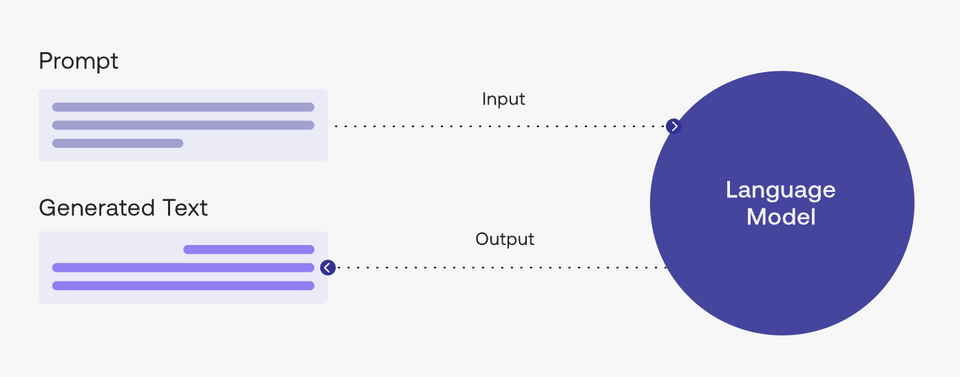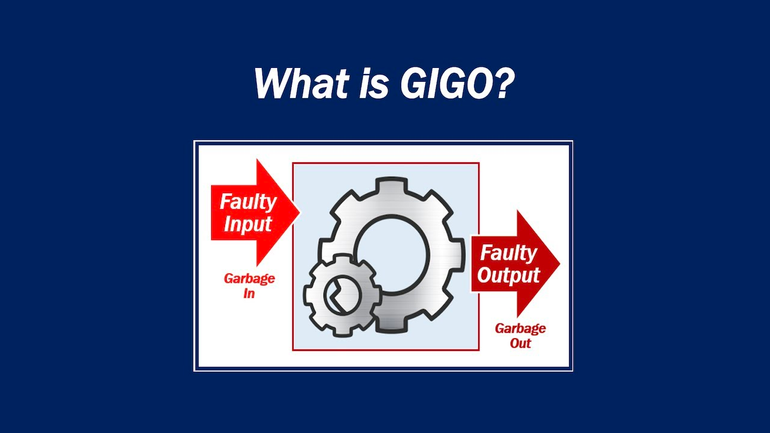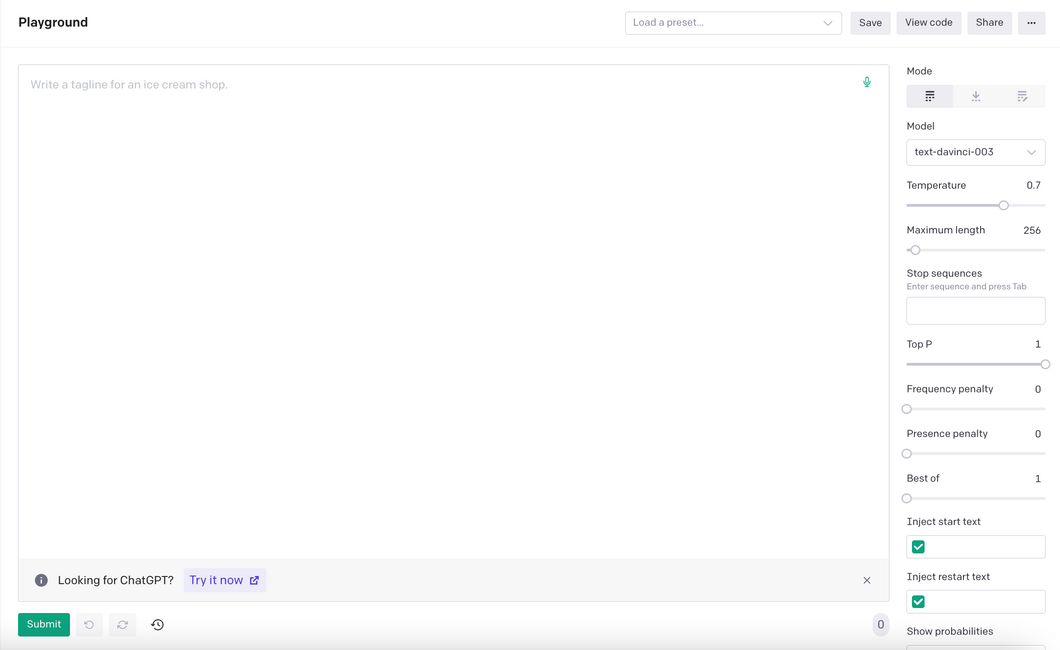Create unique copy with ChatGPT
Search and store tool for Chat GPT Prompt
Create unique and engaging copy with ChatGPT, a pre-trained language model by OpenAI for generating high-quality and accurate content. With ChatGPT, you can take your copywriting to the next level by crafting compelling messages that resonate with your audience. Our state-of-the-art language model can help you write copy that is both persuasive and informative, helping you connect with your target market and drive conversions. Say goodbye to generic, uninspiring copy – with ChatGPT, you can elevate your brand and stand out from the crowd.
Referral Marketing Incentives: How to Encourage Existing Customers to Refer New Customers
How can I use referral marketing to incentivize my existing customers to refer new customers to me?
Creative Ways to Showcase Your Brand Personality and Make it Memorable
What are some creative ways to showcase my brand personality and make my brand more memorable and relatable?
Creating an Effective Customer Loyalty Program for Increased Business
Can you create a customer loyalty program that rewards my most loyal customers and incentivizes them to continue buying from me?
On-Page Optimization: Improving Your Site's Search Visibility

What are the most important on-page factors that I should optimize to improve my [website/page]'s search visibility?
Creating Content that Aligns with Your Target Audience's Values for Your Product/Service

Please generate [type of content] that speaks to the values of my [target audience] and shows how my [product/service] aligns with those values.
Creating Viral Content for Traffic Generation on Social Media Platform

I need a [type of content] that will go viral on [social media platform] and drive traffic to my [website/product]. What can you come up with?
Creating a Personalized Data-Driven Customer Loyalty Program: Tips and Strategies
Please create a data-driven customer loyalty program that targets our ideal customer persona with personalized rewards and incentives.
Optimizing User Retention Metrics to Increase Customer Loyalty and Reduce Churn
Please analyze our website's user retention metrics and suggest optimizations to increase customer loyalty and reduce churn.
Creating a Lead Scoring System for Conversion and Value Prioritization
Please create a lead scoring system that allows us to prioritize leads based on their likelihood to convert and their value to our business.
Optimizing mobile conversion rates through user experience improvements
Please analyze our website's user experience on mobile devices and suggest optimizations to improve mobile conversion rates.
Improving Website Conversion Rates: Analyzing User Data for Optimizations
Please analyze our website's user data to determine where users are dropping off and suggest optimizations to improve conversion rates.
Opinion on Generating Quora Question Ideas to Demonstrate Industry Knowledge and Attract Target Audience

Generate [number] Quora question ideas that our client can answer to demonstrate their industry knowledge and attract their target audience. Context: Target audience — [your target audience here] Client's industry knowledge — [your client's industry knowledge here] Quora goals — [your Quora goals here] Inspiration: "[Quora question inspiration one]" "[Quora question inspiratio...
Developing Effective Webinar Topics to Boost Leads for Client Services

Develop [number] webinar topic ideas that educate our target audience on the benefits of our client's services and generate leads. Context: Target audience — [your target audience here] Client's services — [your client's services here] Webinar goals — [your webinar goals here] Inspiration: "[webinar inspiration one]" "[webinar inspiration two]" "[webinar inspiration three]"...
1 Twitter Thread Ideas to Engage Your Client's Audience of [Industry] with Valuable Insights
![1 Twitter Thread Ideas to Engage Your Client's Audience of [Industry] with Valuable Insights](https://spacewikif.nyc3.cdn.digitaloceanspaces.com/image-prompt/1-twitter-thread-ideas-to-engage-your-clients-audience-of-industry-with-valuable-insights-Example.jpeg)
Write [number] Twitter thread ideas that share valuable insights on a topic relevant to our client's industry and engage their target audience. Context: Target audience — [your target audience here] Client's industry — [your client's industry here] Thread goals — [your thread goals here] Inspiration: "[Twitter thread inspiration one]" "[Twitter thread inspiration two]" "[Tw...
Effective Facebook Ad Ideas to Boost Your Client's Website Traffic and Promotions

Generate [number] Facebook ad ideas that drive traffic to our client's website and showcase their latest promotions. Context: Target audience — [your target audience here] Client's promotions — [your client's promotions here] Ad goals — [your ad goals here] Inspiration: "[Facebook ad inspiration one]" "[Facebook ad inspiration two]" "[Facebook ad inspiration three]" Form...
How to Create SEO-Optimized Blog Post Titles to Attract Organic Traffic and Showcase your Client's Expertise

Write [number] SEO-optimized blog post titles that will attract organic traffic and showcase our client's expertise. Context: Target audience — [your target audience here] Client's area of expertise — [your client's expertise here] Keyword focus — [your keyword focus here] Inspiration: "[blog title inspiration one]" "[blog title inspiration two]" "[blog title inspiration th...
Generating Infographics and Campaign Ideas for Product Launch

Generate [number] infographic ideas that effectively communicate the value proposition of our client's product or service. Context: Target audience — [your target audience here] Client's product or service — [your client's product/service here] Value proposition — [your value proposition here] Inspiration: "[infographic inspiration one]" "[infographic inspiration two]" "[in...
5 Ideas for Animations and Interactive Elements on Your Website for Better Engagement

Provide 5 ideas for using animations and interactive elements in our agency's website to create a more engaging and memorable user experience. Context: Target audience — [your target audience here] Current website interactivity — [describe current website interactivity here] Desired animation and interaction outcomes — [your desired outcomes here] Inspiration: "[animation inspira...
Develop Creative Concepts for a Podcast Series on Industry Trends and Thought Leadership | Opinion and Guidelines Prompt for ChatGPT

Develop [number] creative concepts for a podcast series that explores industry trends and thought leadership while positioning our brand as a knowledgeable resource. Context: Target audience — [your target audience here] What I do — [your elevator pitch here] Content topics — [your content topics here] Podcast series focus — [your podcast series focus here] Inspiration: "[podcast series ins...
Create [number] Engaging Video Concepts for Targeted Education of Brand Expertise
![Create [number] Engaging Video Concepts for Targeted Education of Brand Expertise](https://spacewikif.nyc3.cdn.digitaloceanspaces.com/image-prompt/create-number-engaging-video-concepts-for-targeted-education-of-brand-expertise-Example.jpeg)
Develop [number] creative concepts for a video series that educates our target audience on a specific topic and highlights our brand expertise. Context: Target audience — [your target audience here] What I do — [your elevator pitch here] Content topics — [your content topics here] Video series topic — [your video series topic here] Inspiration: "[video series inspiration one]" "[video seri...
What is “prompt engineering”?
A “prompt” is the input that guides a generative AI model to generate useful outputs. Generative AI tools like ChatGPT, GPT, DALL·E 2, Stable Diffusion, Midjourney, etc. all require prompting as their input.

In a natural language processing (NLP) context, “prompt engineering” is the process of discovering inputs that yield desirable or useful results. As is the story with any processes, better inputs yield better outputs; or commonly said another way “garbage in, garbage out.”


Become a prompt researcher instead of engineer
- If you’re already a subject matter expert in something, consider figuring out how to apply your personal skills to generating the best prompts in your field
- For example, if you’re an expert in SEO, what questions do you ask yourself when creating SEO strategies? How can you translate this knowledge into better prompts to generate the same level of output with AI?
Become a prompt researcher instead of engineer
- The term prompt engineer glosses over the idea that prompt formulation takes hypothesizing, research, result measurement, and repetition. Instead, approach prompting like a research project.
- Try as many different variations and formulations of your prompt as possible. One problem can have hundreds of solutions and one solution can have hundreds of approaches. The same can be said of prompting.